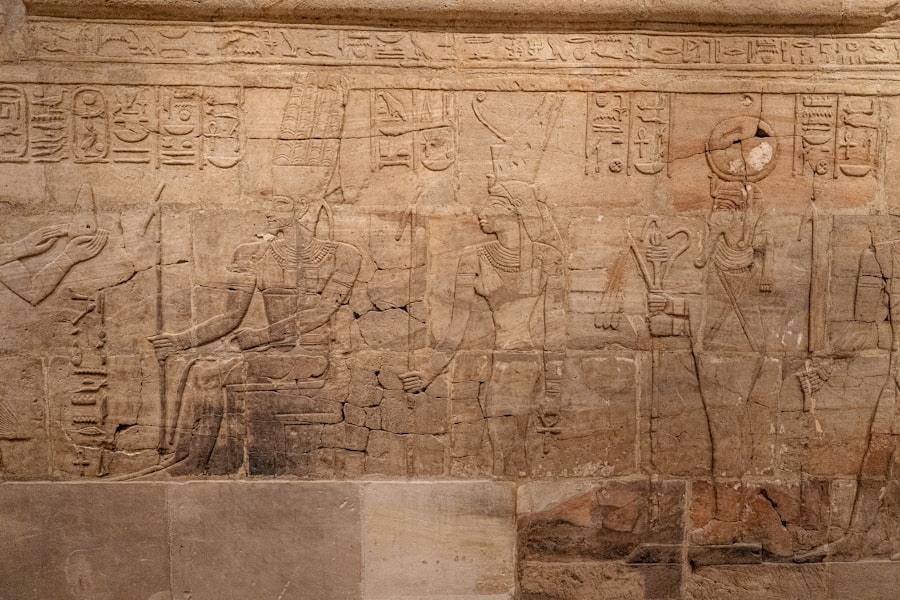Ancient technology encompasses a vast array of innovations and tools developed by early civilizations, reflecting their ingenuity and adaptability. From the rudimentary stone tools of prehistoric humans to the sophisticated engineering feats of the Romans, ancient technology laid the groundwork for modern advancements. These early inventions were not merely functional; they were also a testament to the creativity and resourcefulness of humanity.
The study of ancient technology provides insight into how societies evolved, adapted to their environments, and interacted with one another. Understanding ancient technology is crucial for appreciating the foundations of contemporary life. The wheel, for instance, revolutionized transportation and trade, while agricultural tools enabled societies to cultivate land more efficiently.
Each technological advancement contributed to the growth of civilizations, influencing social structures, economies, and cultures. By examining these innovations, one can gain a deeper understanding of the human experience and the continuous quest for improvement that defines it.
Key Takeaways
- Ancient technology refers to the tools, techniques, and innovations developed by early human civilizations.
- Documenting ancient technology is crucial for understanding the progress of human civilization and preserving cultural heritage.
- Archaeology plays a vital role in uncovering ancient technology through excavation, analysis, and interpretation of artifacts.
- Examples of ancient technological advancements include the invention of the wheel, development of irrigation systems, and construction of monumental architecture.
- Challenges in unveiling ancient technology include deciphering ancient texts, understanding the context of artifacts, and preserving delicate materials.
The Importance of Documenting Ancient Technology
Documenting ancient technology serves multiple purposes, from preserving knowledge for future generations to fostering a greater appreciation for historical achievements. As societies evolve, the risk of losing valuable information increases, making documentation essential. By recording the details of ancient inventions and practices, historians and archaeologists ensure that the wisdom of past civilizations is not forgotten.
This preservation allows contemporary society to learn from the successes and failures of those who came before. Moreover, documenting ancient technology can inspire innovation in modern contexts. By studying how ancient peoples solved problems with the resources available to them, contemporary inventors and engineers can draw parallels and apply similar principles to current challenges.
The lessons learned from ancient technologies can inform sustainable practices and inspire new designs that honor both tradition and progress. Thus, the act of documentation becomes a bridge connecting past ingenuity with future possibilities.
The Role of Archaeology in Unveiling Ancient Tech

Archaeology plays a pivotal role in uncovering the mysteries of ancient technology. Through careful excavation and analysis of artifacts, archaeologists can piece together the technological landscape of past civilizations. Tools, structures, and remnants of daily life provide invaluable insights into how people lived, worked, and interacted with their environment.
Each discovery adds a layer to the understanding of human history, revealing not only what was created but also how these creations influenced societal development. The methodologies employed in archaeology have evolved significantly over time. Modern techniques such as radiocarbon dating, ground-penetrating radar, and 3D modeling allow researchers to gather data with unprecedented accuracy.
These advancements enable archaeologists to reconstruct ancient technologies more effectively, providing a clearer picture of their functionality and significance. As a result, archaeology not only uncovers artifacts but also contextualizes them within the broader narrative of human achievement.
Examples of Ancient Technological Advancements
| Technology | Advancement |
|---|---|
| Pyramids | Advanced engineering and construction techniques |
| Greek Fire | Early form of flamethrower used in naval warfare |
| Roman Aqueducts | Complex water transportation system |
| Chinese Compass | Early navigation tool using magnetism |
Throughout history, numerous civilizations have made remarkable technological advancements that have shaped their societies and influenced future generations. The invention of writing in Mesopotamia marked a significant leap in communication and record-keeping, allowing for the administration of complex societies. Similarly, the development of metallurgy in ancient Egypt led to the creation of tools and weapons that transformed agriculture and warfare alike.
The construction techniques employed by the ancient Greeks and Romans are another prime example of technological prowess. The use of arches and concrete allowed for the creation of enduring structures such as aqueducts and amphitheaters, many of which still stand today. These architectural innovations not only served practical purposes but also reflected the cultural values and aspirations of their creators.
Each example underscores the profound impact that ancient technology has had on shaping human civilization.
Challenges in Unveiling Ancient Technology
Despite significant advancements in archaeological methods, challenges remain in unveiling ancient technology. One major obstacle is the degradation of materials over time. Organic materials such as wood or textiles may have disintegrated completely, leaving behind only traces that are difficult to interpret.
Additionally, environmental factors such as erosion or natural disasters can obliterate sites before they are thoroughly studied. Another challenge lies in the interpretation of artifacts. Archaeologists must often rely on incomplete evidence to reconstruct how technologies were used or understood by ancient peoples.
Cultural biases can also influence interpretations, leading to misconceptions about the capabilities or intentions of past societies. Overcoming these challenges requires a multidisciplinary approach that incorporates insights from history, anthropology, and even experimental archaeology to create a more comprehensive understanding of ancient technologies.
The Evolution of Ancient Tech

The evolution of ancient technology is a fascinating journey that reflects humanity’s relentless pursuit of improvement. Early innovations were often simple and utilitarian, designed to meet immediate needs such as food production or shelter construction. As societies grew more complex, so too did their technological solutions.
The transition from nomadic lifestyles to settled agricultural communities necessitated advancements in farming tools and irrigation systems. As civilizations expanded through trade and conquest, they exchanged ideas and technologies, leading to further evolution. The Silk Road, for instance, facilitated not only the exchange of goods but also knowledge about metallurgy, mathematics, and engineering across cultures.
This cross-pollination of ideas resulted in significant advancements such as the compass in China or advanced shipbuilding techniques in the Mediterranean. The evolution of ancient technology is thus a testament to humanity’s interconnectedness and shared quest for progress.
The Impact of Ancient Technology on Modern Society
The impact of ancient technology on modern society is profound and far-reaching. Many contemporary inventions can trace their roots back to ancient innovations. For example, modern engineering principles owe much to Roman construction techniques, while agricultural practices continue to be influenced by ancient methods developed thousands of years ago.
The wheel remains a fundamental component in transportation systems worldwide, illustrating how foundational technologies endure through time.
The development of writing systems laid the groundwork for literature, law, and governance—elements that are integral to modern civilization.
By understanding these historical connections, individuals can appreciate the continuity between past achievements and present realities, fostering a sense of shared heritage that transcends geographical boundaries.
The Process of Documenting Ancient Technology
The process of documenting ancient technology involves meticulous research and collaboration among various disciplines. Historians begin by reviewing existing literature and archaeological findings to identify gaps in knowledge or areas requiring further exploration. Fieldwork often follows, where archaeologists excavate sites with potential technological significance.
This phase includes careful cataloging of artifacts and contextual analysis to understand their function within their respective cultures. Once artifacts are collected, they undergo rigorous analysis using both traditional methods and modern technologies such as imaging techniques or chemical analysis. This comprehensive approach allows researchers to reconstruct not only how technologies were made but also how they were used in daily life.
Finally, findings are disseminated through publications, exhibitions, or digital platforms to ensure that knowledge is accessible to both academic audiences and the general public.
The Role of Documentaries in Educating the Public about Ancient Tech
Documentaries play a crucial role in educating the public about ancient technology by bringing complex subjects to life through engaging storytelling and visual representation. These films often combine expert interviews with stunning visuals of archaeological sites and artifacts, making history accessible and relatable to viewers. By presenting ancient technologies within their cultural contexts, documentaries foster a deeper understanding of how these innovations shaped human experiences.
Furthermore, documentaries can spark interest in archaeology and history among audiences who may not have previously engaged with these subjects. By highlighting groundbreaking discoveries or lesser-known aspects of ancient technology, filmmakers can inspire curiosity and encourage further exploration into humanity’s past. In this way, documentaries serve as powerful tools for education and cultural preservation.
Future Discoveries in Ancient Technology
The future holds great promise for discoveries related to ancient technology as ongoing archaeological efforts continue to unearth new sites and artifacts around the world. Advances in technology—such as satellite imagery and artificial intelligence—are revolutionizing how researchers identify potential excavation sites and analyze data from previous digs. These innovations may lead to significant breakthroughs in understanding how ancient peoples lived and interacted with their environments.
Moreover, interdisciplinary collaboration will likely play an increasingly important role in future discoveries. By combining insights from fields such as genetics, environmental science, and anthropology with traditional archaeological methods, researchers can develop more nuanced interpretations of ancient technologies. As new findings emerge, they will undoubtedly reshape existing narratives about human history and technological evolution.
Preserving and Celebrating Ancient Technological Achievements
Preserving and celebrating ancient technological achievements is essential for honoring humanity’s collective heritage. By documenting these innovations and sharing their stories with future generations, society acknowledges the creativity and resilience that have defined human progress throughout history. This recognition fosters a sense of connection between past and present, reminding individuals that they are part of an ongoing narrative shaped by countless innovators before them.
As new discoveries continue to emerge from archaeological endeavors around the globe, there is an opportunity not only to learn from ancient technologies but also to apply those lessons in contemporary contexts. Embracing this legacy encourages innovation while promoting sustainability—a vital consideration in today’s rapidly changing world. Ultimately, preserving ancient technological achievements is not merely an academic pursuit; it is a celebration of human ingenuity that transcends time and geography.
If you’re intrigued by the fascinating world of ancient technology, you might find the documentary “Ancient Technology Explained” particularly enlightening. It delves into the innovative methods and tools used by ancient civilizations, shedding light on their remarkable engineering feats. For further exploration of similar topics, you can check out this related article on ancient discoveries at XFile Findings, which offers a wealth of information on historical technologies and their impact on modern society.
WATCH THIS! Nikola Tesla’s Forbidden Secret: The Great Pyramid Was a Power Plant
FAQs
What is ancient technology?
Ancient technology refers to the tools, techniques, and knowledge used by ancient civilizations to create and innovate various technologies for their time.
What are some examples of ancient technology?
Examples of ancient technology include the construction of the pyramids in Egypt, the invention of the wheel, the development of irrigation systems, and the creation of early forms of writing and communication.
How did ancient civilizations develop their technology?
Ancient civilizations developed their technology through experimentation, observation, and trial and error. They used natural resources and materials available to them to create tools and devices that improved their daily lives.
What can we learn from ancient technology?
Studying ancient technology can provide insights into the ingenuity and problem-solving abilities of ancient civilizations. It can also offer valuable lessons in sustainable living and resource management.
What are some misconceptions about ancient technology?
One common misconception is that ancient technology was primitive and unsophisticated. In reality, many ancient civilizations developed advanced technologies that were well ahead of their time.
How is ancient technology relevant today?
Ancient technology continues to be relevant today as it provides inspiration for modern innovations and solutions to contemporary challenges. Additionally, studying ancient technology can help us understand the roots of our current technological advancements.
